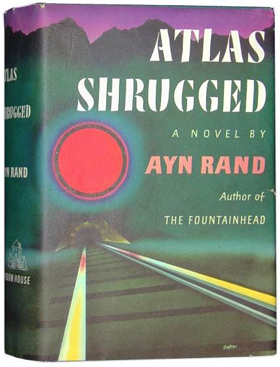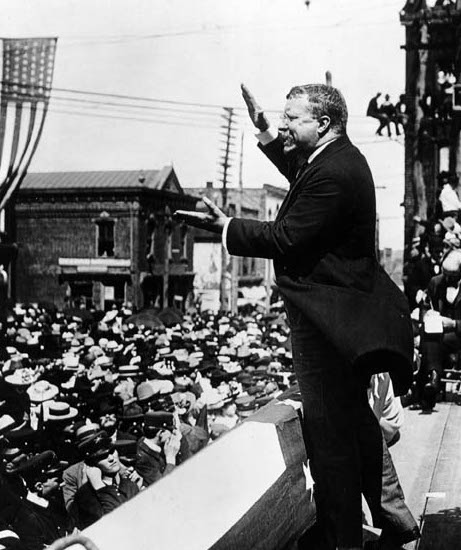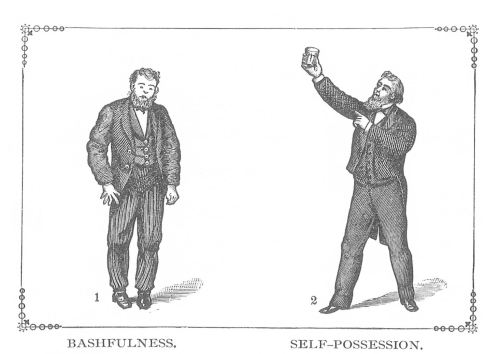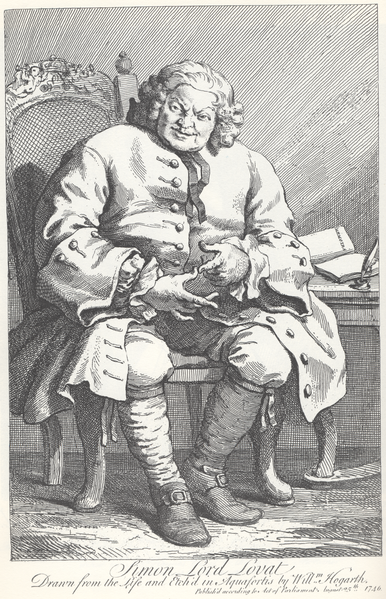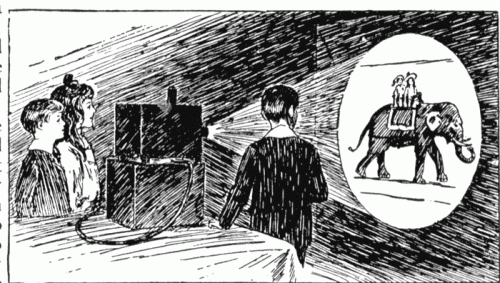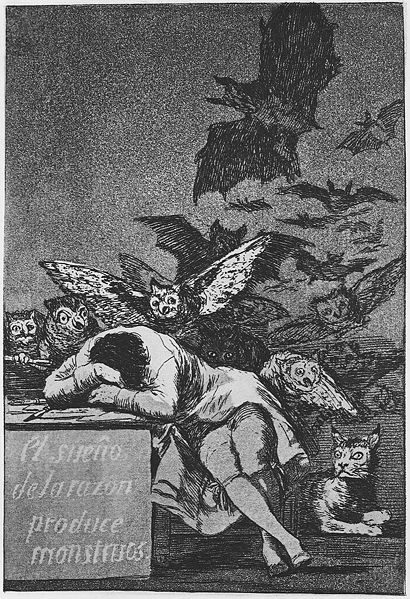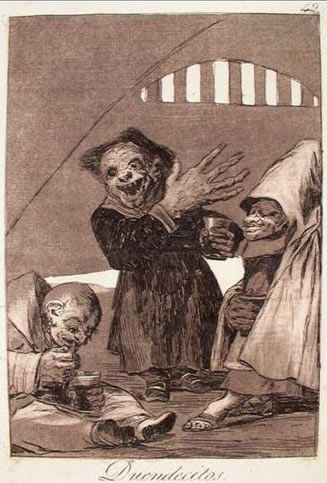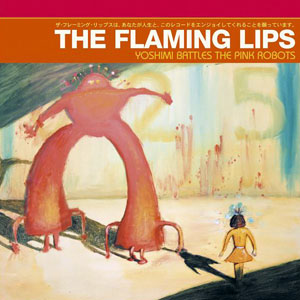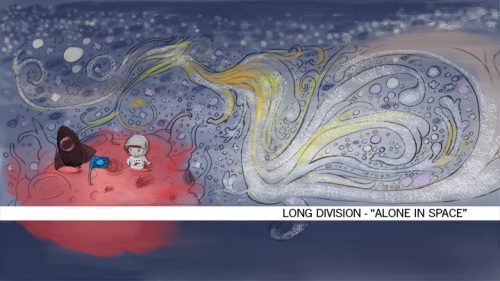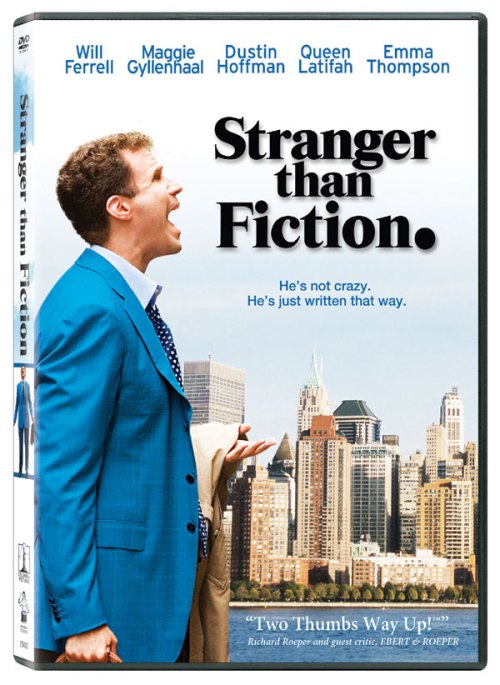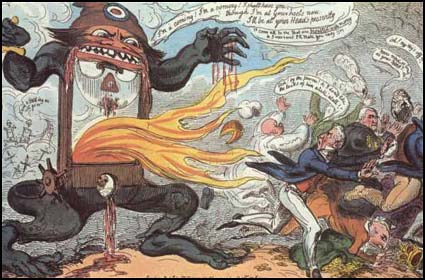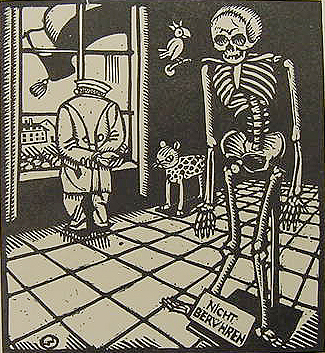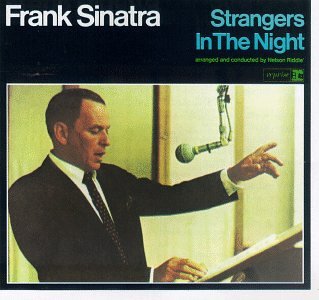His movies have won Oscars for himself and the people with whom he collaborated, and the American Film Institute recognizes his films A Place in the Sun, Woman of the Year, Swing Time, and Shane as being among the best movies ever made. He has credit not just as a director, but also as a cinematographer, producer, and writer. Stephen Spielberg lists him as an influence. Yet, for whatever reason, George Stevens does not get the same respect and film-school shout-outs that guys like Scorsese and Tarantino command. I would like to help correct that oversight.
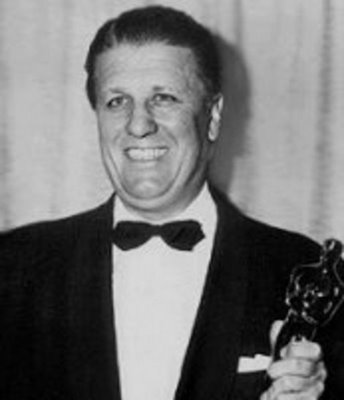
break
I had seen and enjoyed a few of George Stevens’s films, but I didn’t take interest in him as a director until I saw some talking-head footage of an elderly Frank Capra. Capra’s face lit up when he mentioned Stevens, declaring that he would look him up when he went to heaven so that they could work on more pictures together. Frank Capra is a huge source of inspiration to me, so that made me wonder, “Who is this George Stevens guy, and why does Frank Capra like him so much?”
For one thing, he was a partner at Capra’s Liberty Films production company. As it happens all four of the partners in that company had gone overseas to help the war effort during World War II. Like Frank Capra, George Stevens went over at the height of his career, sacrificing all the comforts that come with success to serve his country.
Before he packed up his bags for Europe, George Stevens had worked with A-list actors in critically acclaimed productions, generated huge box office, and had his movies nominated for best picture awards. One of the nominated pictures was The Talk of the Town, made in 1942, just before Stevens committed himself to the war effort.
This is not a trivial point. To state the obvious, an Oscar nomination gives someone a lot of buzz, which can translate into more power and creative freedom. From a business perspective, that is one of the worst times to step away from the limelight, to take a pay cut in the name of your ideals.

Still from Triumph of the Will – Leni Riefenstahl, 1935
break
Yet, that’s exactly what George Stevens did. Why would he do that? According to first hand accounts of those who knew him, he saw the German propaganda film Triumph of the Will and felt compelled to do something about it.
Confronted by evil, Stevens did not merely write a letter to an editor or buy US Treasury bonds; he put everything on the line to oppose it. He left a career that almost anyone would envy to document the struggles of our troops in dangerous situations.
In the process, he was one of the few people to capture the horrors of the concentration camps, photographing the piles of bodies lingering in the fields as if they were just piles of rubble at a construction site. That footage did much to convince the world that the horrors of the camps were not propaganda lies but real, devastating atrocities.
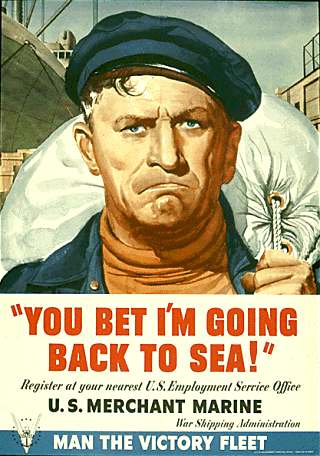
World War II recruitment poster
break
Truly George Stevens earned his place in the Greatest Generation. Would the people in our generation be able to rise to the occasion in a similar manner? I do not know, but I have my doubts. We’ve grown decadent as a society, fueled by powerful entities who feed our basest instincts in the name of profit and entertainment.
George Stevens never stooped to that level. His filmmaking style is steady and deliberate, a little slower in pace than other filmmakers, but he still holds our attention. If you can fill the screen with the size of someone’s character, you don’t need to resort to fast cuts and cheap gimmicks. It’s like Norma Desmond said in Billy Wilder’s Sunset Boulevard, “I am big. It’s the pictures that got small.”
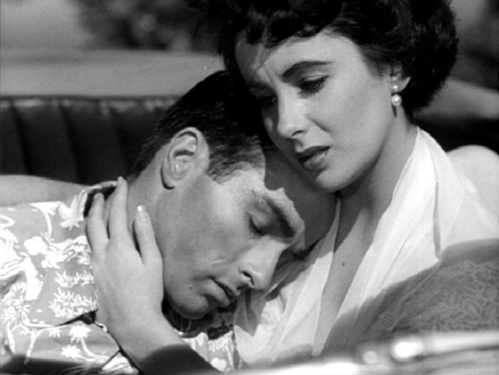
Still from A Place in the Sun, 1951
break
That’s not to say a Stevens picture lacks sexiness. It’s just that he’s a skilled enough craftsman to do more with less. You get such a sense of intimacy in the way he stages the kisses between Montgomery Clift and Elizabeth Taylor in A Place in the Sun, sometimes cutting off even parts of their faces out of frame, that you don’t need to watch an explicit 10-minute sex sequence to get the idea.
In Swing Time, there’s a clever door gag that prevents us from seeing the couple kiss at all, but the scene is still sexy in the way Fred Astaire and Ginger Rogers relate to each other. Actually, sometimes it’s more alluring when the details are left to our imaginations.
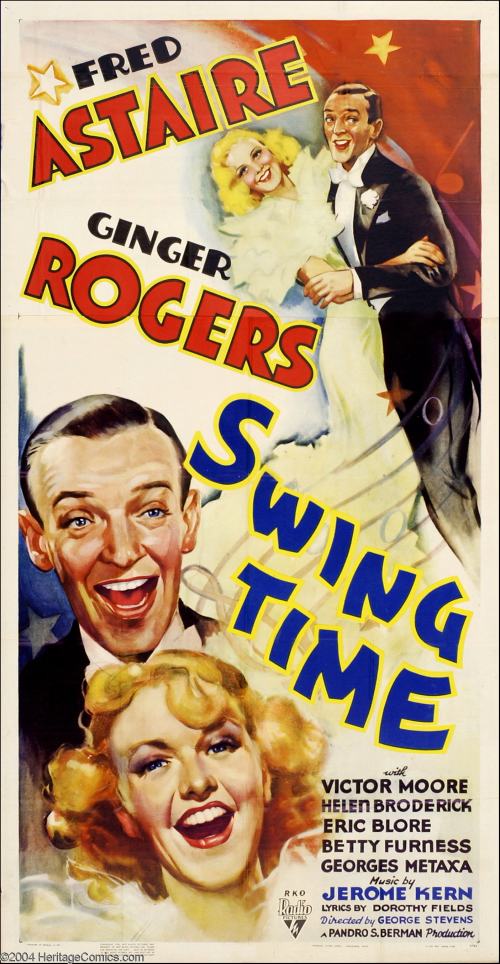
Swing Time movie poster, 1936
break
Speaking of details, let’s look at some of George Stevens’s films and recurring themes. While he had done other feature-length films, his breakout production was Alice Adams, his first chance to work with a rising star, in this case Katherine Hepburn. The film was well received, getting nominated for best actress and best picture. In it we see two preoccupations that Mr. Stevens will revisit throughout his career: the battle of the sexes and the efforts needed to make domestic life work.
Men and women in conflict are also notable parts of Annie Oakley, Woman of the Year, Shane, and Giant. Sometimes the woman’s outlook prevails, as in Annie Oakley and Giant. Annie is literally competing with a man, the guy she happens to love, in one sharpshooting match after another throughout the film. In Giant, the dramatic question is whether Leslie will bring about change to the Benedict ranch or whether it will stay set in its ways. She changes it by influencing her husband to finally take a stand against racism.
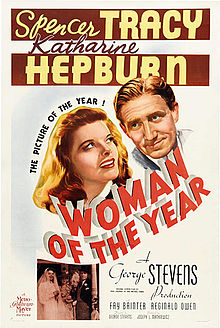
Woman of the Year movie poster, 1942
break
Sometimes it is the masculine side that prevails, like in Shane. In Woman of the Year it is more or less a draw. Sure, she cooks for him in the end, but Tracy Spenser had to play the part of a subservient house wife for much of the film.
Taken as a whole, Mr. Steven’s work does not come down in favor of one side or another. The differences between men and women are delineated, but they both seem important to Steven’s concept of a happy, civilized existence. In the world of George Stevens, both sides have to sacrifice something to make the relationship work, but the relationship is worth it.
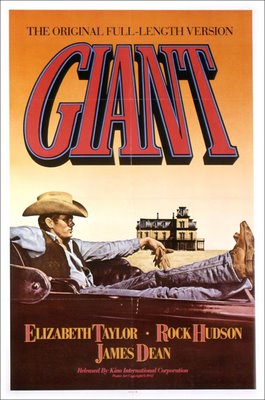
Giant movie poster, 1956
break
Some filmmakers cut out the chores that their characters have to do in their day-to-day lives. (That way you get to the explosions faster!) Not so in Steven’s films. We watch the details of ranch maintenance in Giant, the struggle to pull up a tree root in Shane, and the small indignities that come with trying to make ends meet in I Remember Mama. These details usually aren’t there to advance the plot, but to reveal the effort that the characters expend to sustain their environments and their relationships.
Yeah, commentary about chores. That’s how I keep my readers engaged! Before you start thinking that this is a chore to read, or that you’d like to get back to your cherished collection of Tarantino films consider this: I’ll be giving a away a free TV to the first 5 people who can prove that they made it to the end! That’s right, what better way to experience the glories of George Stevens’s Giant then on a magnificent big-screen television!
Thanks to the tireless efforts of our partners, we’ve managed to put questionnaires under the seats of all our readers. So, right now I want you to look under your seat. Seriously. Right now, look under your seat. What do you see?
Probably just a few screws and bolts and other chair components. Maybe dried gum, if you’re that sort. What can I say, my partners and I like to think big, but we’re still trying to get the execution right, and when I say partners I’m being optimistic and talking in the future tense. Still it would be a nice promotion to do some day, so check back in like 20 years. Or something like that. It’s hard to get the date exactly right when you’re talking in the future tense.
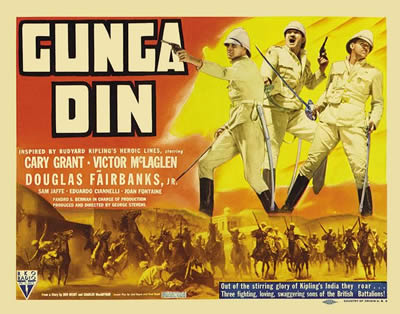
Gunga Din movie poster, 1939
break
Back to the films. I discovered Gunga Din when doing research for this post, and what a great action film that is. Set in 19th century India, the story follows the adventures of three British soldiers, one of them being the ever charming Cary Grant, who seek treasure while battling the sinister, Kali-worshiping natives.
With its masterful blend of adventure, humor, and supernatural elements, Gunga Din set the stage for contemporary action-adventure films like Indiana Jones and Romancing the Stone.
The battles in Gunga Din happen on an epic scale and the action still holds up, impressive because they didn’t have the technology to fake it back then. Those are all real horses, real extras, real stunts.
Even though this is a light-hearted swashbuckling adventure, we still see Stevens’s values shine through. This quote from Sgt. Ballantine as played by Douglas Fairbanks Jr. sums it up nicely, “The trouble is you don’t want a man for a husband! You want a coward who will run out on his friends! Well, that’s not me, never was, and never will be. I don’t care how much I love you! And I do very much. I’m a soldi… I mean I’m a man first!”

World War II recruitment poster
break
Doing one’s duty, that is to say doing the things that aren’t enjoyable but that need to be done, was an important concept to George Stevens. He didn’t just put it in his movies to gain appeal. He lived it by getting involved in the war effort.
When abroad I’m sure he witnessed some horrible, evil things. I’ve never witnessed anything like the horrors of war, but I have encountered evil on a smaller scale. Even then, it takes effort not to let that influence how I treat people.
On occasion I’ve failed at that and hurt others because I could not rise above the hurt that others had done to me. My point is that it would have been disappointing, but understandable, if George Stevens came back from war and made cynical, jaded films.
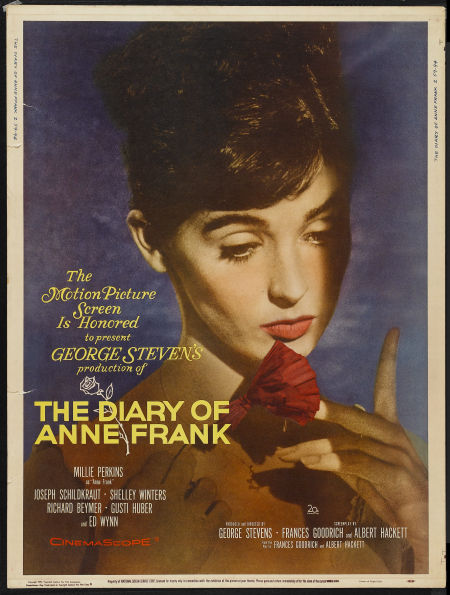
The Diary of Anne Frank movie poster, 1959
break
That’s not what happened. Yes, some of the humor went away, but it was replaced with a heightened moral vision, and he made his most regarded films after the war: A Place in the Sun, Shane, Giant, The Diary of Anne Frank, and The Greatest Story Ever Told. I will discuss these films in more detail, so you might want to watch them before reading further.
A Place in the Sun is the most ambiguous of the lot. It’s a fine piece of filmmaking but a bittersweet pill to swallow: George Eastman, played with depth and passion by Montgomery Clift, gets sentenced to death simply because he did nothing to save a girl from drowning, a girl that he once planned to murder but then decided against it when the time came. She falls out of the boat by accident. Not being able to swim, she dies.
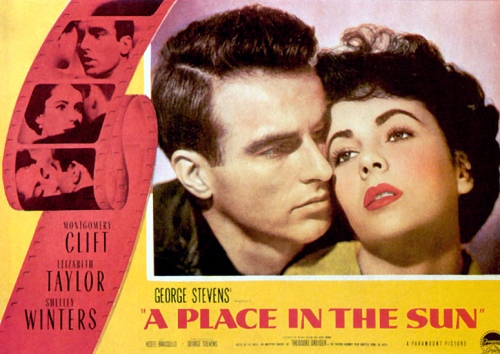
A Place in the Sun movie poster, 1951
break
Eastman initially considered killing the girl, his former sweetheart, because she got pregnant and was interfering with his attempts to romance a stunning society girl, played by Elizabeth Taylor.
Was he doomed for being tempted to murder or for overweening ambition? For getting his girlfriend pregnant? For not being honest? Because society wouldn’t allow his girl to get an abortion? A lesser filmmaker would have hit us over the head with the message, but Stevens keeps it open to interpretation.
My take: Eastman was guilty because he did nothing. He knew that his former girlfriend couldn’t swim, but when the boat overturned he ignored her and chose to take care of just himself.
Not counting On Our Merry Way, an uncredited film he helped to direct with three other directors, A Place in the Sun was only the second film George Stevens made after the war, so my guess is that it was his way of working out his feelings toward the Germans who saw Nazi horrors but did nothing to stop them.
On a technical level, watch how Loon Lake changes in its associations throughout the story. First it is a place of optimism, of a budding romance, then it foreshadows tragedy, then creates suspense, and later reinforces guilt. Genius.
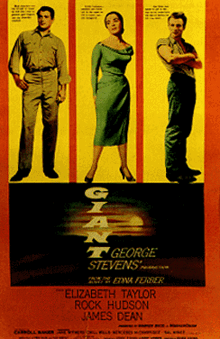
Giant movie poster, 1956
break
Another genius thing that George did was guide the film Giant to greatness. That’s right ladies and gentlemen, there is rarely a situation that cannot be improved with a smattering of alliteration thrown into the mix, applied with discretion. I stand behind that statement.
To demonstrate, I ask you to consider the Middle East. Does alliteration abound there? No. Are there lots of problems? Yes. (A probable note from Nick’s future partners: kindly do not take Iran and Iraq into account. It is not fair to count them, because if you do that then you discredit the illustration we are trying to make. Also, these TVs we’re giving away look amazing!)
Thanks for being patient folks. I know this is a long post, but I’m just trying to do justice to Mr. Stevens, a severely underrated director. Besides, George Stevens is known for making long films, so the length is not entirely inappropriate.

Giant publicity still
break
Anyway, the movie Giant really was a gigantic undertaking. The production team actually constructed the facade of a Victorian home on location in Marfa, Texas, and the house was built to scale from what I understand. Think about how much easier it would have been to build a smaller replica of the house on a studio backlot, but that wasn’t how George Stevens did things.
George Stevens Jr. recalls this statement from dad when he asked why they had to spend so much time finessing the details: “Just think of how many man hours people will spend watching this film over the years. Don’t you think it’s worth spending a little more of our time working to make it a better experience for them?” What an unselfish outlook. The emphasis is not on what is most profitable for him, but what is most beneficial to us.
When we see the house stand in proud defiance of the otherwise flat landscape, it gives a sense of scale to the surroundings and a heft to the unfolding story. Not a bad payoff for all that work.
The film spans decades which means the main characters have to play young and old versions of themselves. In doing so, Elizabeth Taylor, Rock Hudson, and James Dean give some of the best performances of their careers.
The astonishing part is that they were all under 30 at the time. Surely some of the credit to their believability as adults beyond their years must go to George Stevens. Someone else must have thought so too: the film earned Stevens an Oscar.
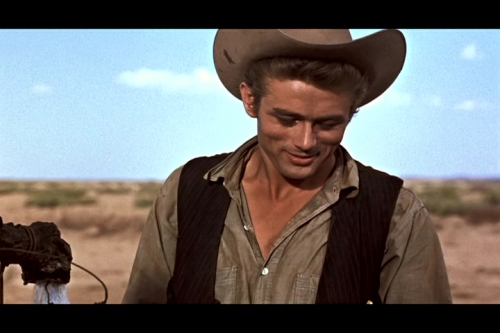
Still from Giant, 1956
break
Let’s take a closer look at James Dean’s character before moving on to the next film. He plays Jett Rink, the outsider looking in. He discovers oil and finds success but not character, and so he withers into demise, not standing the test of time in the way that the Benedict family does. Although Jett evolves into a villain, Stevens still allows him moments of sympathy, triumph, and charisma.
That’s Stevens’s affection for the outsider talking. Notably, some variation of the outsider figure, the character who doesn’t quite belong but yearns to do so, also appears in Alice Adams, Annie Oakley, Gunga Din, Shane, The Diary of Anne Frank, and the Greatest Story Ever Told. (It’s not too much of a stretch to claim that Christ might be the ultimate outsider.)
Oh man. We’ve made it this far, and I haven’t even discussed Shane in detail yet. I suppose I’ll save the 28 pages of analysis for when I’m really trying to make a good impression. Nothing like sharing a glass of merlot while deconstructing the mise en scène of a film, right ladies? Still, Shane is one of my favorite films, so please indulge me for a few paragraphs as I expand upon it.
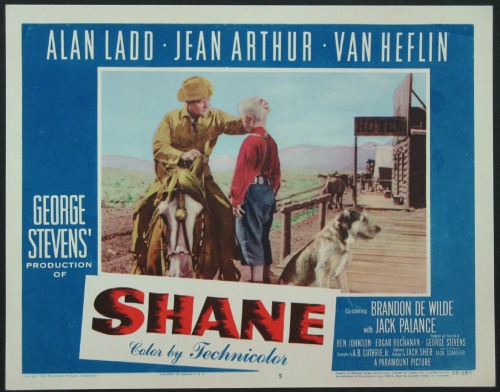
Shane movie poster, 1953
break
The story centers around the home of Joe and Marian Starrett and their little boy Joey. Joe and Marian were married on July 4th, Stevens’s way of suggesting that there is something quintessentially American about the family. They are homesteaders working diligently to maintain a small place of their own out in the wilderness.
Mostly, they are a self-reliant bunch, but they partner with other homesteaders to help preserve the common good. That small community of homesteaders is threatened by Ryker, a rapacious rancher looking to expand his territory by any means necessary. As fate would have it, that’s when Shane, a stranger, an outsider, comes to the Starrett home.
Shane is a former gunslinger with a mysterious past. He was planning to stay at the Starrett home for just a short time, but then he comes to admire the family and realizes that they are in danger. Reluctantly, he takes up his gun again to defend them.
Marian doesn’t want her son exposed to guns, but Shane rebukes her by saying, “A gun is a tool Mariam. No better or worse than any other tool, an axe, a shovel or anything. A gun is as good or as bad as the man using it.”
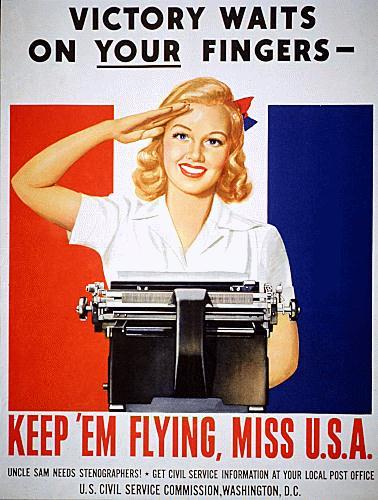
World War II propaganda poster – Royal Typewriter Company
break
There’s that sense of duty again. This time it’s to preserve a family’s way of life that Shane himself may never know. He sees the inherent decency in the Starrett family and feels compelled to defend it, even though it might cost him his life. That’s the iconic sensibilities of a soldier on display, ladies and gentlemen.
There are hints throughout the film that Shane and Marian are attracted to each other, but when the treacherous Ryker tries to buy his loyalty by offering him anything, even Joe Starrett’s wife, Shane gets angry. He doesn’t pause to consider. He doesn’t waver in his response, calling the rancher a dirty old man.
That’s the kind of man Shane is. He refuses to take what isn’t his, regardless of his feelings.
Throughout the film, George Stevens uses young Joey to help shade our perception of Shane. We first see Shane when Joey spots him approaching the house. At first, Joey is bewildered by the strange man, but then he comes to admire him. “I just love Shane,” he tells his mom. “He’s so good.”
Wherever Shane goes, Joey is not far behind, quietly observing him and making sure that Shane is still worthy of his admiration. He stays enthusiastic about Shane until Shane fights his dad, and then his tone changes. “You hit him with your gun. I hate you,” he wails at Shane.
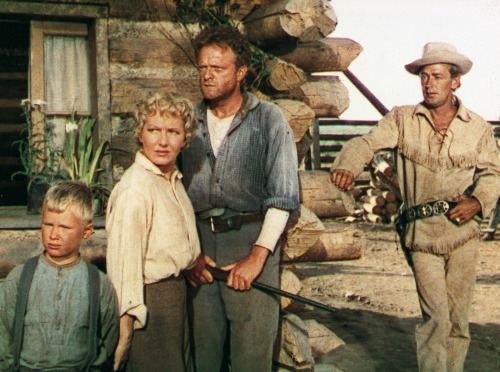
Shane production still, 1953
break
The issue is not that Shane picked a fight with his dad but that he didn’t play fair, since the dad was unarmed. Concluding that Shane could not possibly be good if he doesn’t play fair, Joey is devastated. Only later does the poor little guy realize that Shane hit his father to protect him, to prevent him from facing Ryker’s gunman.
Relieved, Joey rushes to catch up to Shane, and gets there just in time to help Shane stay alive. When Joey watches Shane leave he does so both with admiration and sadness, acknowledging the departure of a good man. Those of us in the audience who cherish the opportunity to see a truly good man in action share Joey’s sentiments.
You don’t need razzle-dazzle effects when you can get your performers to convey that kind of character. There’s another moment in Shane that relates. It happens when one of the homesteaders is thinking about leaving town to avoid facing Ryker’s men. Joe tells him he can go but then adds that he would be mighty disappointed if he left. Hearing that the man stays, willing to put his life at risk so as not to lose the esteem of Joe Starrett.
That’s the kind of man Joe is, and when we watch Van Heflin deliver those lines in his quietly authoritative way, we believe he can have that kind of impact on others. There’s no way a director lacking in character would ever get that moment right.
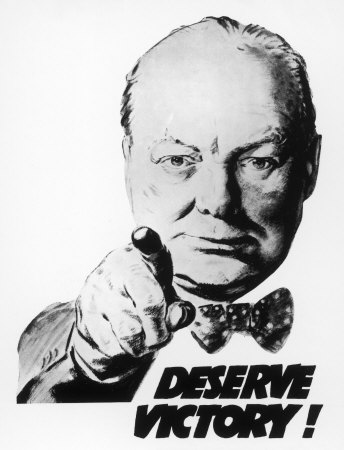
World War II propaganda poster
break
On to the Diary of Anne Frank. Yet again we see George Stevens’s interest in the nuances of domestic life and the pressures that come when different types of people share a confined space.
The fully realized set helps to convey the subtleties. Seeing a photo of George Stevens on that set was supposedly what first got Spielberg to dream about becoming a director.
The film is beautifully shot and beautifully acted, and it features one of the first prolonged sequences of a Hanukkah celebration captured on film, but the film’s power comes from Anne Frank’s famous quote: “In spite of everything, I still believe that people are really good at heart.”
Some critics complained that the film did not show what happens to Anne at the concentration camp and suggested that her statement and the limited perspective of the film is naive. They got it wrong. She says the line after she has a nightmare about a concentration camp, after hearing the sounds of gunfire at night.
That line shows up again in the film’s conclusion. The movie ends with a shot of Anne’s father reading from her diary. He survived the concentration camp. Anne did not.
We hear her quote again, this time in voice over, and it brings him to tears. “She puts me to shame,” he cries. Then we see a shot of birds flying in the sky, similar to one that opens the film, as if to suggest that Anne found a way to fly above the fray, to transcend the cruelty that surrounded her.
Like Anne Frank, George Stevens saw the evils of war, but instead of getting tainted by what he saw, he grew stronger in his capacity to see the good around him. The Diary of Anne Frank is his victory anthem.

World War II propaganda poster – Alexander Liberman, 1943
break
The Greatest Story Ever Told was the second to last film that George Stevens made. I won’t go so far as to say that it is the best movie ever made. Much of it feels like a snapshot of Sunday-school lessons rather than a fleshed out story.
It comes with the territory of approaching a subject that is regarded with such reverence by so many people. There’s enormous pressure to live up to other people’s expectations, and so it becomes very difficult to tell the story in a personal, dramatically inventive way.
Still, there are some exceptional bits. The cinematography plays up the struggle between light and darkness, becoming almost a black and white film at times.
Just like in a Western, the good guys are in white and the bad guys in black. Christ and most of the townspeople are draped in white garments. Only the religious leaders and the people in power wear black, providing more insight into how George Stevens sees the world.
The Lazarus resurrection sequence is stirring, but the moment that resonates most with me is when Sidney Poitier emerges from the crowd to help Christ carry the cross. It is as if Sidney Poitier is saying without words, “I too am an outsider. I too have known sorrows. Let me help you.”
George Stevens’s sense of duty exposed him to the worse in mankind. Not letting evil overcome him, he kept his films focused on things nobler than himself and the cruelties he witnessed, and he did so in a meticulous, larger-than-life way. That’s what made him a great director, one of the best.
I salute you, Mr. Stevens, and I do hope you’re up there making more pictures with Frank Capra. If you see my dad, tell him I say hello. You two share the same name.
break
If you enjoyed this exploration of George Stevens’s films, you might also enjoy my posts on these filmmakers:
Frank Capra
Cameron Crowe
Pixar
break
If you appreciate my writing, why not write a comment or share the post with a friend? It would encourage me to keep writing and sharing bits of my heart with you.
Please consider signing up to get my posts by email. You can do that by clicking here. I don’t write every week. If I did, I wouldn’t have the time to write the kinds of posts I prefer to write.
I only write if I believe I have something worth writing and after I’ve spent some time finessing my thoughts. If you’re following along by email, you’ll know right away when I have a new post waiting for you. It is very easy to unsubscribe, and you won’t receive anything unrelated to my blog.
As always, thanks for reading and God bless.
